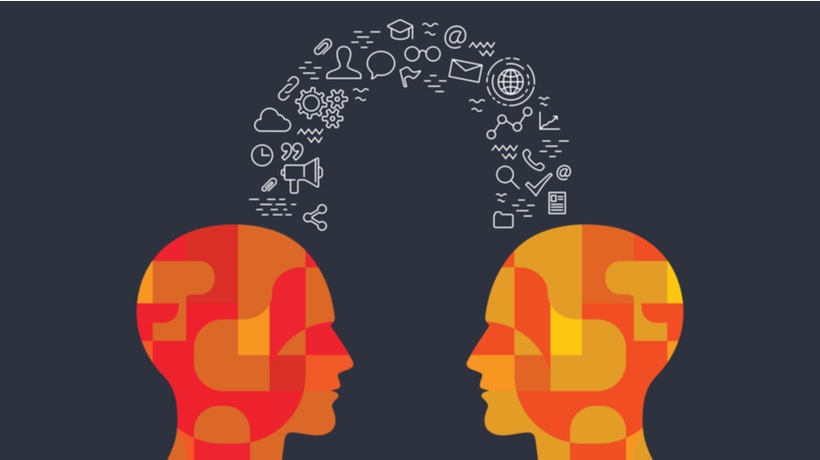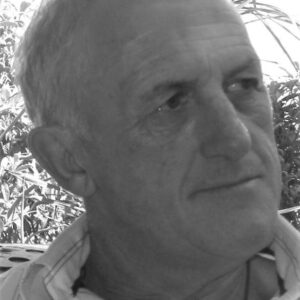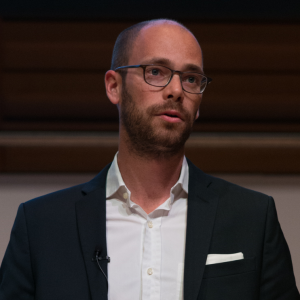2 Cs: 2 Simple Concepts, 2 Huge Levers
Context and a sense of community are key to effective eLearning strategies. They are also key to better understanding how to build sustainable, successful, and healthy organizations, as well as to contribute to a better quality of life for all human beings. Significantly, more and more thought leaders are referring to the importance of these concepts, or elements thereof, in their daily conversations and dialogue. If we fail to see the importance of these 2 Cs, we will miss opportunities to help the people and organizations we care about learn to be happier, healthier, and more successful. Let's examine these 2 Cs: a. context and b. sense of community.
A. Context
"It is not smart to give the right answer to the wrong question." I was recently reminded of this fact in a brief video presentation by Rich Litvin as part of Michael Bungay Stanier's fabulous Year Of Living Brilliantly program.
We are incessantly bombarded by so much information, so many opportunities to learn and so many requirements to make important decisions. It is not reasonable to expect that we would mostly be in a position to respond adequately. Unless, we have thought about these moments beforehand and prepared for them. Unless, we have a framework in our minds to contextualize them and to be able to reflect and respond appropriately in the moment. Or unless, we are able to delay our immediate response for further reflection and a later, more appropriate response, or even to store the moment for deeper reflection and consideration.
Thought Leaders, Thought Readers, And Thought Levers
There are so many brilliant thought leaders out there, sharing their thinking every day. It almost seems presumptuous to many of us that we can add to new thinking. Unless we think about new thinking differently. Again, I was reminded recently by Peter Winick that there is an invaluable role for thought readers versus thought leaders. You see, many thought leaders are expressing their ideas within overarching themes. They are giving insightful and different spins that impact how we might think differently about common themes or challenges. How can we better prepare ourselves to be smart thought readers? How can we be people who can swiftly contextualize what a thought leader is saying, reflect on it, integrate it into our own thinking, experiment with it, and then extend our own understanding and iterate better ways of doing things? In this way, we add our own value as intelligent thought readers and become invaluable thought levers.
The answer to all of the above lies in our ability to continually work on and develop our context quotient in order to leverage intelligent thinking as well as our capacity to reflect, regulate and evolve as better persons (through continually evolving our EQ to do so). Having had the privilege of working with some extraordinary thought leaders, it is my observation that their thinking is always intentional. They have the ability to think about random experiences or thoughts and ask deeply intentional questions of themselves in a specific context. And in this way, to extend their current thinking to improve specific ways of thinking about and doing things in order to achieve better outcomes. Context provides both the map to specifically position their thinking as well as the compass to give directionality to their thinking. They are, after all, smart because they have the ability to apply their minds to the right questions.
The Challenge
Is it possible to develop a single model that can help thought readers to quickly contextualize current best practices and thinking, as well as to accommodate new thinking, by positioning it in a way that they can understand where, how, and why it may add value to the way they currently do things? To this end, inspired by a specific event in 2014, I set myself the challenge of building an open-ended model that could contextualize all best practices and new thinking as it relates to making organizations and the people working in them sustainably healthier, happier, and more successful.
The key to the success of this challenge would be to apply systems thinking to build a model for the open-ended systems that position, include, and contextualize all current best practices and thinking, as well as potential future new thinking. Almost eight years later, I have ended up with a model that contextualizes all best practices and thought leadership as it relates to sustainable organizational health and success. As importantly, the research led me to understand the importance of each of us being the entrepreneurs of our own lives, to help each of us take ownership in forging our own unique key to unlock our personal success and happiness, and thereby, to help those around us to do the same.
It is my intention that this model and the key that I discovered will help people to become better thought leaders, thought readers, and thought levers. And most importantly, to help us to build a universal currency for a better world, inhabited by happier, healthier, and more successful people. More about this in articles to come.
B. Sense Of Community
Recent and ongoing dialogue and conversations of many thought leaders refer to the concept of a sense of community or critical elements thereof. This is important and significant. My concern is that we are dealing with this dialogue and these conversations as being in the realm of thought leadership. This is simply not the case. There is extensive, excellent, ongoing, longitudinal research (spanning many decades) on the concept of a sense of community. In airing this concern, it is my intention to draw attention to the invaluable body of research and evidence that can enable us to leverage the opportunity that this concept, this research, and this evidence holds. I have argued previously that this research is as relevant or more relevant than the concept of organizational culture in developing organizations that are sustainably happy, healthy, and successful places to work.
Evidence from my own experience suggests that well-intended organizational culture initiatives may be experienced negatively by stakeholders as corporate nationalism. This is a simple but costly error for leadership to make. And, it may not be such a difficult error to make, if one considers the following. Nationalism is often described as "an ideology that emphasizes loyalty, devotion, or allegiance to a nation or nation-state and holds that such obligations outweigh other individual or group interests." Therefore, it holds that corporate nationalism is effectively a leadership position in which they want to create an organizational culture that "emphasizes loyalty, devotion, or allegiance to the company and holds that this obligation outweighs individual or other interests." Sound familiar? And in this instance, why would we be surprised if employees don't buy in?
In current times, a more appropriate definition for an organization is as follows: "Organizations are open-ended communities of people, formally assembled to work together to achieve a common purpose." It is my contention then, that a better starting point in building a healthy organization is to found it on developing a strong sense of community. Think about it, in the evolution of humankind, logically and chronologically, humans created and lived in communities, and then sustainable communities led to the development of their own cultures over time. History shows that the unsustainable ones had a nationalistic approach.
Therefore, again logically, if we understand and pay attention to building a strong sense of community in organizations, with strong universally sound ethics, we will create the conditions for people of diverse cultures and from diverse walks of life to work happily, collaboratively, and successfully together. The outcome of this can be a powerful, overarching culture built on universal principles of common decency. This approach is supported by neuroscience research that suggests that "people act their way into believing rather than thinking their way into acting."
The concept of a sense of community is a key dimension of my systems model and is represented diagrammatically below. The diagram shows the key constructs of a sense of community. This aspect of the model has been developed after careful review of and reflection on a representative body of invaluable research in the context of the above proposed new definition of organizations. It also provides context for the invaluable insights of thought leaders who have applied their minds to the concept. This aspect of the model will be discussed more fully in a future article.

A Final Word
The aim of learning is to improve the way we do things. Given the WWW, knowledge, best practice, and new thinking are ubiquitous. Improving our context quotient will immeasurably improve our ability to assimilate, evaluate, and apply these appropriately. Creating a strong sense of community in the different groups with which we interact will create safer, more supportive, and more caring environments, enabling us to have trusted accountability partners who hold us true to our quest to become better.










